How to Keep Urinals from Clogging
How to Keep Urinals from Clogging
No one is exactly going to think “clean” when they picture a urinal, but a poorly maintained one can look and smell foul enough to leave a particularly bad impression. If this isn’t a deterrent on its own, urinals experience serious backups and clogs over time if left untreated, creating a major hassle for facility maintenance teams. But how do you treat a urinal to stop clogs and other problems in the first place?
At State Chemical, we manufacture and distribute chemical and biological solutions for various applications, including urinal maintenance. Dealing with a urinal clog or backup can be time-consuming, costly, and gross, so it’s best to stop clogs from happening in the first place.
To help you avoid urinal clogs and backups, we will explain what causes them, how to prevent them, and how to unclog already-clogged urinals. After reading, you’ll be equipped to prevent urinal backups in your facility.
What Causes Urinal Clogs?
Through normal use, urinals take on uric acid, calcium, and lime. Unfortunately, over time, these substances build up in the urinal drain and pipes, leading to slow drains, clogs, and backups. Plus, this buildup will leave a particularly foul smell in the area.
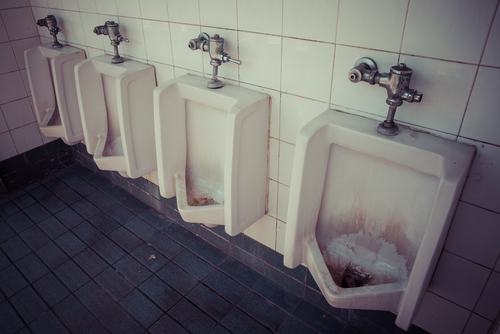
Additionally, uric acid, calcium, and lime buildup can stain your urinal(s) brown or yellow, and they can also further the spread of bacteria. These results may not be as obviously destructive as clogs, but they can give your facility an unhygienic reputation and spread disease. In the long run, this will cost you, your staff, and your customers.
Urinal clogs can also be caused by foreign objects, such as an excess of toilet paper, cigarette butts, or other items. These types of clogs are not from normal usage and can’t be anticipated as easily. To prevent foreign objects from entering urinals, it’s recommended to educate facility users on what can and cannot clear a urinal drain (e.g., you can provide a wall chart that lists prohibited items).
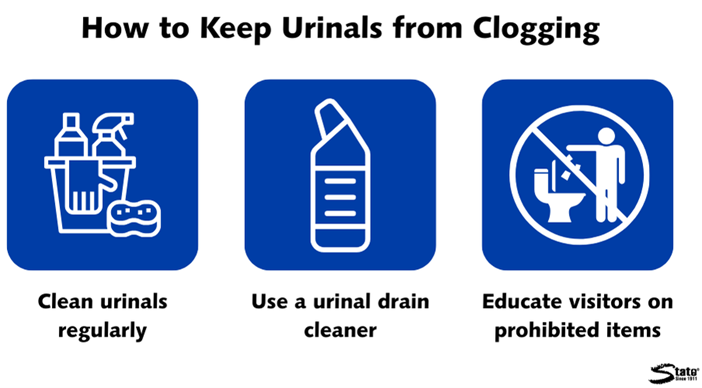
How to Keep Urinals from Clogging
Fortunately, if you plan ahead, you can keep urinals from clogging in the first place. To treat the issue comprehensively, the key is to take a multi-step approach. The following steps can help prevent urinal clogs:
Clean Urinals Regularly
The first step toward attaining clog-free urinals is taking the time to clean your urinals regularly. This means creating a maintenance schedule, recording when maintenance is completed, ensuring no foreign objects enter the urinals, and completing regular inspections.
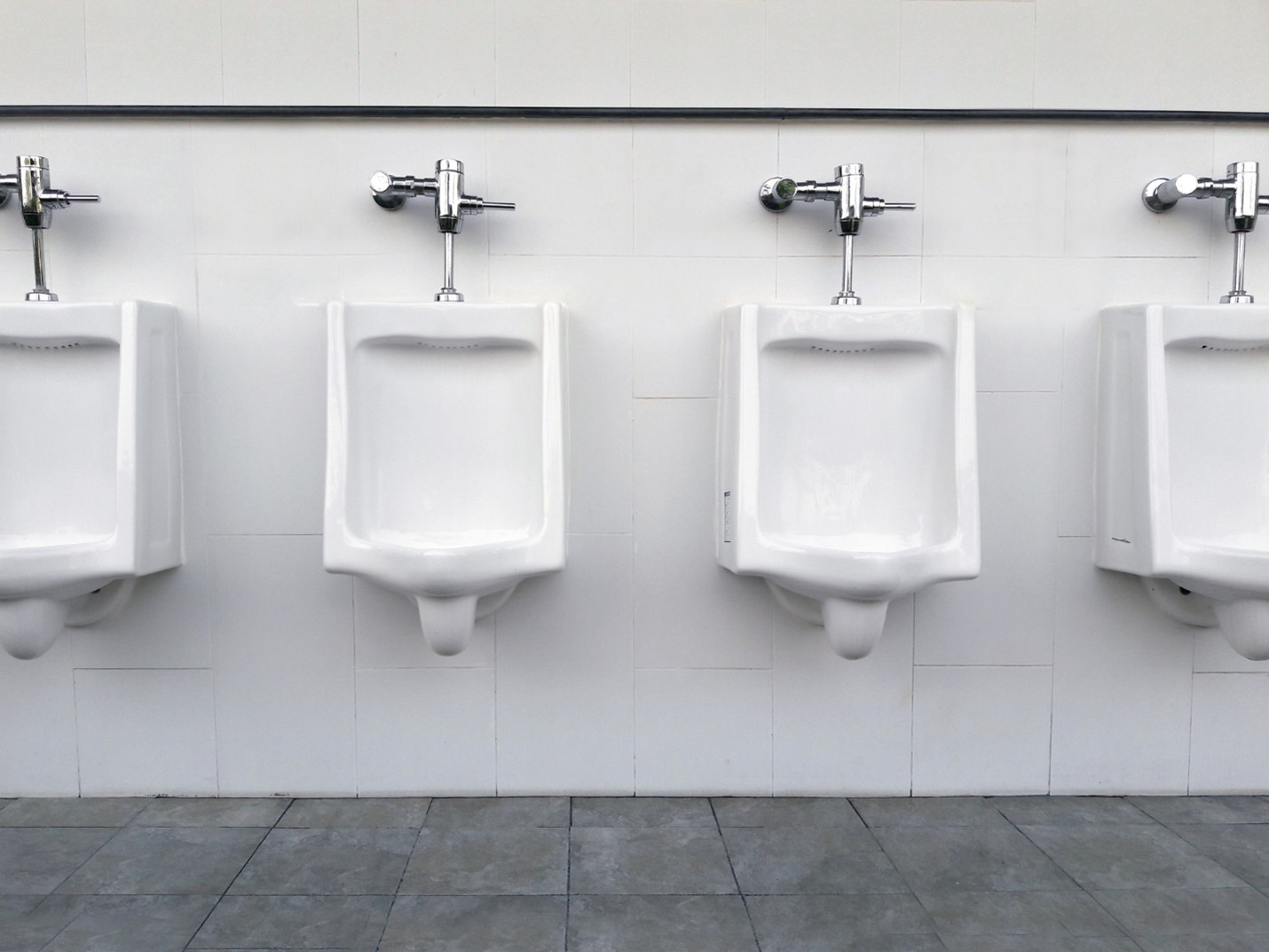
You may be thinking this is obvious, but record-keeping goes a long way in making sure maintenance stays on track and doesn’t get overlooked.
As time goes on, you might not notice big changes in your urinal’s condition—after all, it’s a slow progression that you get used to even with frequent cleanings. But if you make an intentional effort to check regularly for damages, foreign objects, staining, and odors, you’ll be keener to notice when something is awry.
This is also where record-keeping comes in handy—it can remind you of when a urinal needs extra attention, and it can keep your staff on track by providing a schedule. With these regular cleanings, you can clean out buildup and improve the appearance of your urinal before issues present themselves. This can be an important factor in preventing clogs. Plus, with regular inspections, you can pay extra attention to the condition of your urinal before issues become detrimental.
With regular cleanings and inspections, any urinal will present better and be less likely to experience clogs.
Use a Urinal Drain Cleaner
Regular cleanings still can't curb drain buildup, but fortunately, urinal drain cleaners handle that problem.
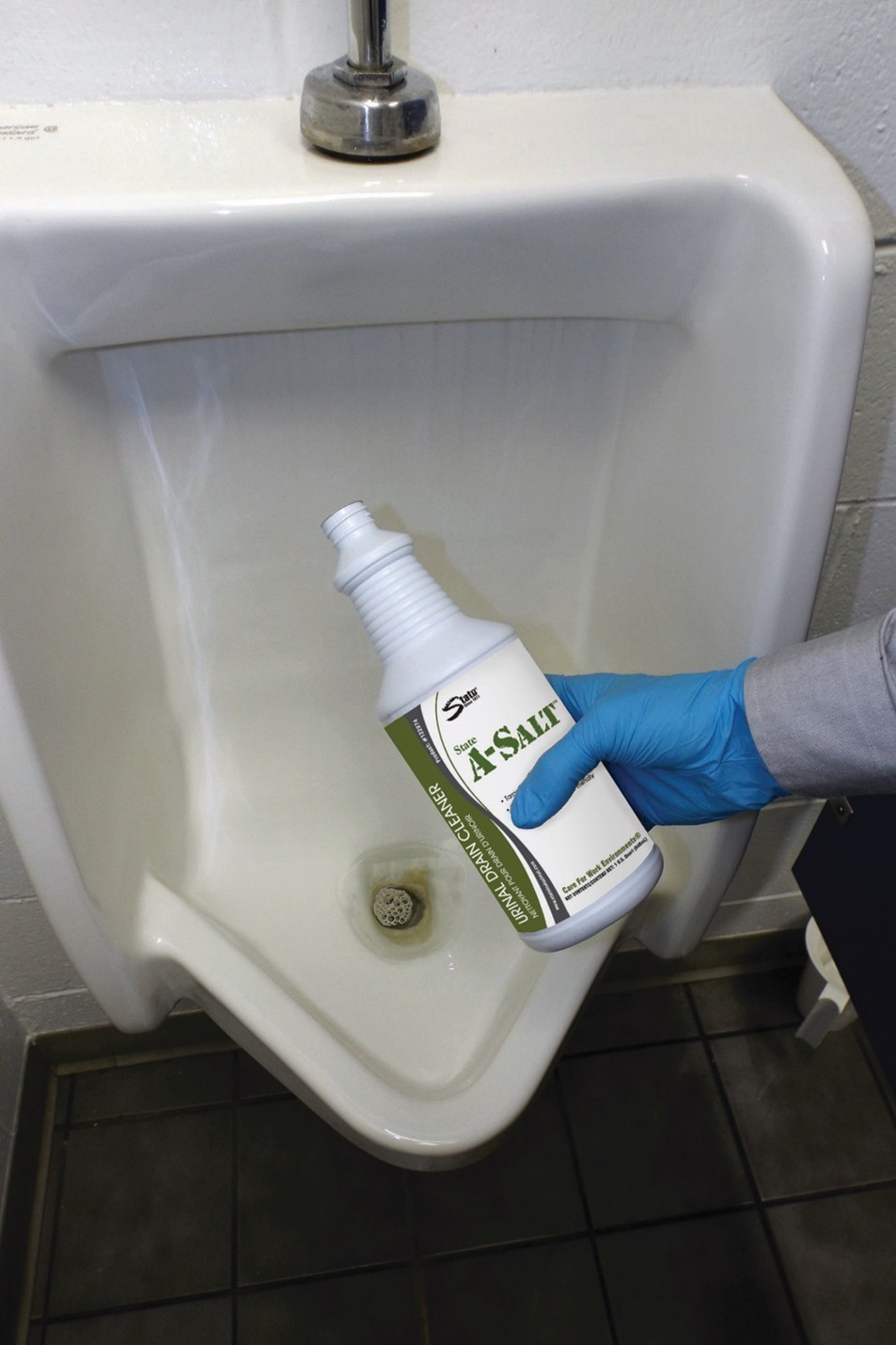
Urinal drain cleaners use a chemical or biological compound to cut through urinal buildup and keep the system running smoothly. When used regularly, drain cleaners keep buildup under control and prevent clogs from occurring.
It can be ideal to add urinal drain cleaners to your maintenance schedule. This way, when a urinal is due for cleaning, you can also use a urinal drain cleaner to keep the pipes as clean as the porcelain is. This will also prevent odors, bacterial growth, and staining.
When used regularly, urinal drain cleaners can make a significant difference in the appearance of your urinal and can prevent serious clogs, blockages, and backups.
The frequency with which you should use a urinal drain cleaner depends on the severity of your buildup and the exact product you choose. Check product directions to determine the proper application frequency for your situation.
Educate Visitors on Prohibited Items and Use Urinal Screens
If your urinals experience frequent blockages from foreign objects rather than normal buildup, it’s probably a good idea to also educate visitors on prohibited items. This is not a foolproof method by any means, but by having an educational poster on the wall, you can remind people of proper disposal methods.
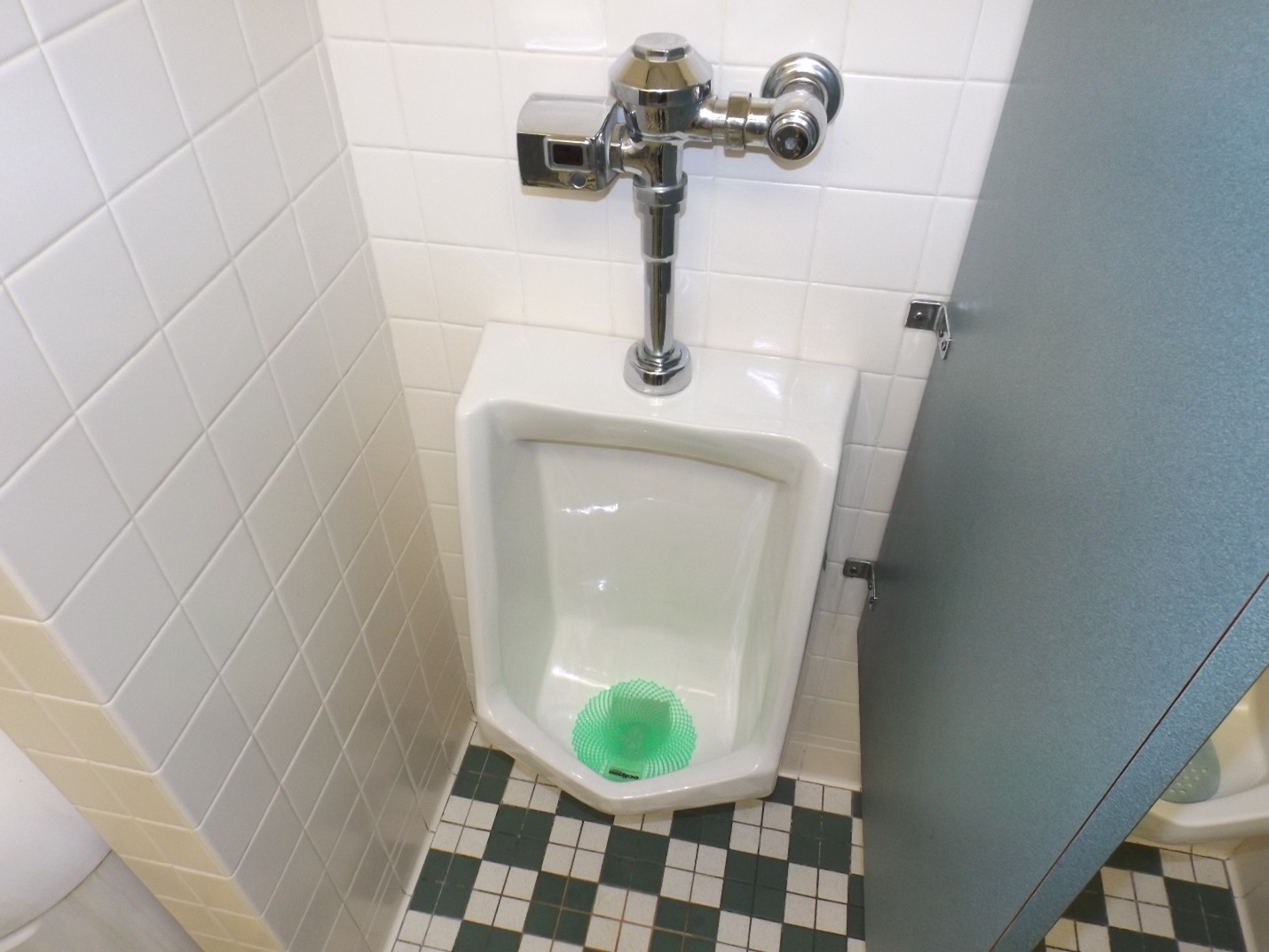
Unfortunately, this won’t always stop accidents from happening. A more preventative measure to block debris from entering your urinals is through the use of urinal screens. These are solid screens placed inside urinals to prevent items like cigarette butts from entering the urinal drain—plus, they prevent splash back, and some even fight back against malodors.
If you continue experiencing blockages from foreign objects despite taking these measures, you’ll need to learn about how to clear an already-clogged urinal.
How to Clear a Clogged Urinal
When you’re experiencing an already-clogged urinal, your approach changes a bit. Depending on the severity, you have a few ways to unclog your urinal:
Use a Drain Snake or Auger
To manually break up buildup, you can use a drain snake or auger. This will remove buildup and push substances aside so the urinal drains normally.
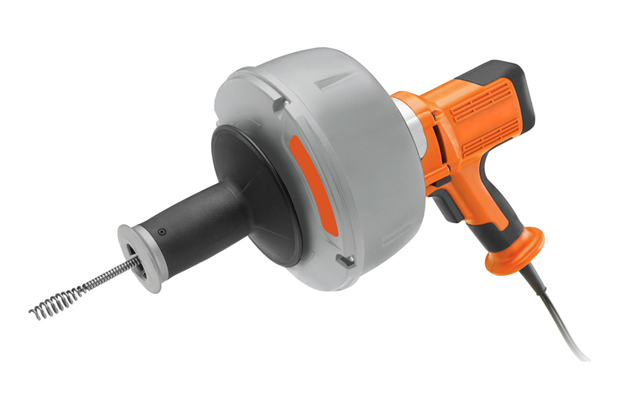
This is usually the first thing you should try to unclog a urinal drain. It can remove physical buildup in a relatively cost-efficient way, and even if it doesn’t work, it can loosen buildup before you move to a more serious step like using a urinal drain opener, helping it be more easily cleared.
Use a Urinal Drain Opener
If your clog is too serious for a drain snake or auger, it’s time to explore urinal drain openers. These are powerful chemical products specifically designed to unclog urinal drains (note that it’s important to select a drain opener that's safe for urinals, as certain drain openers [e.g., many acids] will damage porcelain).

To use a urinal drain opener, you’ll simply need to pour the correct dosage down your urinal drain and wait for it to take effect. For safety, follow your specific product’s directions and personal protective equipment (PPE) requirements.
Commercial drain openers are strong chemicals. If your urinal is still clogged after using one of these products, it’s time to contact the professionals.
Call a Plumber
When drain snakes or augers and chemical drain openers fail, contacting a plumber is your best bet. Your drain issues are probably more severe in this situation, and a plumber will be able to best determine how to proceed. If you’ve exhausted your other methods, this is the only route.
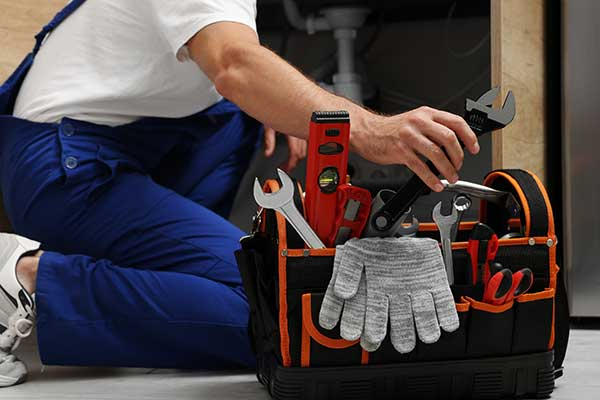
Learn How State Chemical’s A-Salt Can Prevent Clogs in Your Urinals
No one wants to deal with the fallout of a urinal drain clog or backup. Now that you know how to prevent clogs in your urinal drains, watch the video below to learn how State Chemical’s urinal drain cleaner A-Salt can help you with this.








